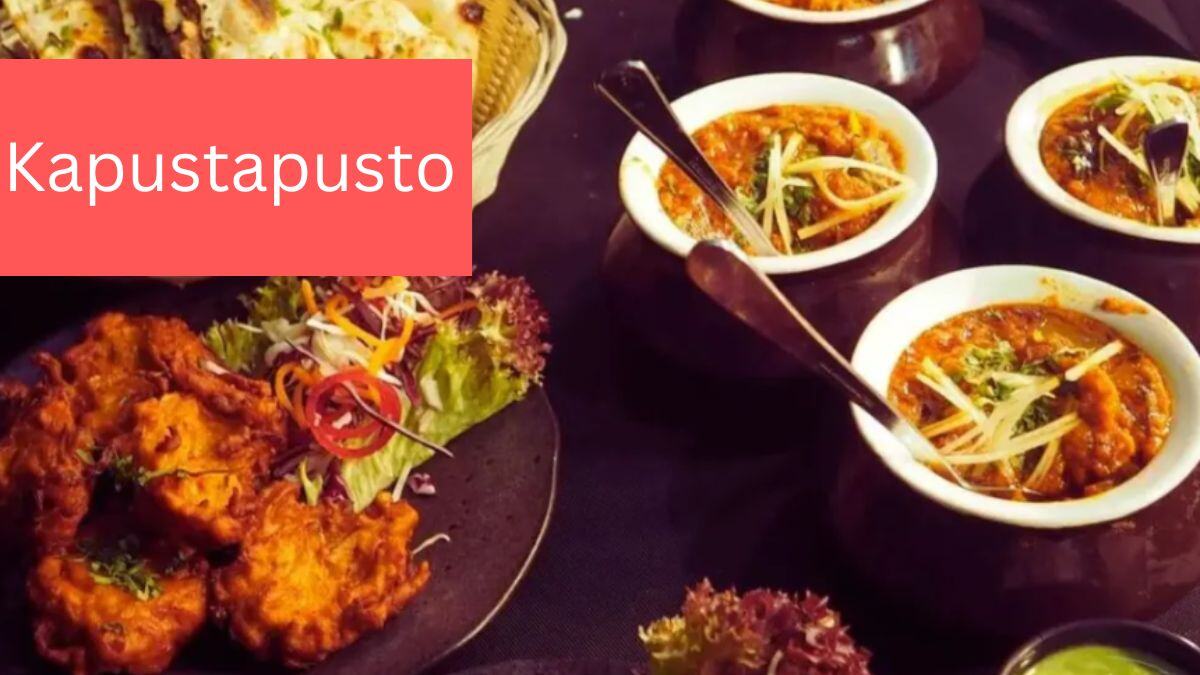It all started when I decided to explore the world of Eastern European cuisine. As I dove deeper into the traditions and flavors of the region, kapustapusto caught my attention, and I just had to learn more.
Growing up, cabbage was always a staple in my family’s kitchen, but kapustapusto opened my eyes to a whole new world of possibilities.
Kapustapusto isn’t a real cabbage variety—it’s more like a make-believe name. It’s used to talk about how cabbage is important in Eastern European cooking and how it’s good for you. The name comes from words that mean cabbage and something simple.
In this article, we’ll dive into the world of kapustapusto, a term that represents the tradition, health benefits, and culinary diversity associated with cabbage.
What Exactly Is Kapustapusto? – Must Know!

Kapustapusto is a made-up word mentioned in the description you shared earlier. It represents tradition, health, and the many ways cabbage is used in Eastern European cooking.
Although “kapustapusto” isn’t a real word people use, the story gives us a glimpse into how important cabbage is in different foods, its good-for-you qualities, and how it’s prepared and stored. If you want to know more about cabbage or anything else related, just ask!
Read more: What Is The Value Of X If Mc020-1.Jpg – Find The Value Of ‘x’!
Exploring Its Origins And Cultural Importance – The Roots Of Kapustapusto!
Kapustapusto comes from Eastern Europe, where cabbage is really important in cooking. The name “kapustapusto” shows how special cabbage is there. In many languages in that area, “kapusta” just means cabbage, and “pusto” means something simple.
People in Eastern Europe have been eating cabbage for a long time. It’s in lots of their traditional dishes and big celebrations.
Cabbage has always been easy to get and cheap in Eastern Europe. It’s used a lot because it can last through long winters when other fresh veggies aren’t available. People use different types of cabbage in their cooking, and they make all sorts of yummy dishes with it.
In Eastern European culture, kapustapusto isn’t just a vegetable – it’s a symbol of good things like having plenty, being lucky, and being welcoming to guests. You’ll see it a lot in special meals for things like festivals and weddings.
They use it in soups, stews, and even special pickled cabbage dishes. People believe cabbage can bring luck and protect against bad spirits, so they sometimes use cabbage leaves in rituals and decorations.
Unlocking The Health Secrets Of Kapustapusto – Discover Its Nutritional Value And Wellness Benefits!

Kapustapusto is packed with good stuff that keeps you healthy and feeling great. Let’s break down why it’s so good for you.
It’s like a vitamin powerhouse! Kapustapusto has loads of vitamin C, which helps your body fight off sickness and keeps your cells safe from harm. Plus, it’s got vitamin K for strong bones and vitamin B6 to help your brain and nerves work properly.
When it comes to minerals, kapustapusto has you covered. It’s got potassium to keep your heart happy, manganese to protect your bones, and folate to help your body make new cells.
But that’s not all! Kapustapusto is also full of fiber, which helps your tummy stay happy and keeps your blood sugar in check. It makes you feel full and helps you go to the bathroom regularly.
Eating kapustapusto regularly can help your immune system stay strong, reduce inflammation in your body, and lower your risk of getting sick. With all its vitamins, minerals, and fiber, kapustapusto is a tasty way to stay healthy and feel your best!
Read more: Kecveto – A Vegan Approach To Ketosis!
Delicious Ways To Enjoy Kapustapusto – Discover Culinary Uses And Preservation Techniques!
Kapustapusto is great for cooking because it has a strong taste and a chunky texture. In Eastern Europe, people use it in traditional dishes like borscht (a kind of soup), sauerkraut (fermented cabbage), and stuffed cabbage rolls.
These dishes show how versatile kapustapusto can be, as it adds lots of flavor and heartiness to soups, stews, and casseroles.
In other parts of the world, cooks get creative with kapustapusto, using it in salads or coleslaws for a crunchy bite. It can also be thrown into stir-fries or wrapped up in sandwiches for a tasty and healthy meal.
How can kapustapusto be preserved:
To keep kapustapusto fresh for longer and make it taste even better, people use different methods:
- Fermentation: This is one of the oldest ways to preserve kapustapusto. People chop up cabbage and soak it in salty water. Good bacteria then turn the cabbage sugars into acid, which helps preserve it. Sauerkraut is a famous example of this method.
- Pickling: Another way to keep kapustapusto tasty is by pickling it. People put shredded cabbage into jars with vinegar, salt, and spices. The vinegar’s acid stops bad bacteria from growing, so the cabbage stays good for longer. Pickled cabbage is yummy on its own or added to sandwiches and salads.
Kapustapusto’s Global Reach – Explore The Latest Market Trends!

Kapustapusto isn’t just popular in Eastern Europe—it’s making its way into kitchens all around the world. Chefs and cooks from different countries are using it in lots of different dishes. From Korea to America, kapustapusto fits right in, adding its own flavor to local foods.
People are starting to care more about eating healthy and helping the environment. That’s why kapustapusto is getting even more attention. Farmers and scientists are trying out new ways to grow it better and make it healthier.
They’re also finding cool ways to turn kapustapusto into different foods that people love to eat.All these changes are making kapustapusto even more popular. Whether it’s in your local market or on your dinner plate, kapustapusto is showing that good food can be tasty and good for the planet too.
Read more: Lead-In To Lingo – Unlocking the Clues!
Frequently Asked Questions:
1. What are the nutritional benefits of kapustapusto?
Kapustapusto is rich in vitamins C, K, and B6, minerals like potassium and manganese, and dietary fibre, contributing to digestive health, immune function, and disease prevention.
2. How is kapustapusto used in cooking?
Kapustapusto features traditional Eastern European dishes like borscht and sauerkraut, as well as modern recipes such as salads and stir-fries, showcasing its versatility in the kitchen.
3. What are the environmental implications of kapustapusto cultivation?
Sustainable cultivation practices minimize environmental impact, with integrated pest management and climate adaptation strategies addressing challenges such as pest control and climate change.
Conclusion:
Kapustapusto transcends its humble origins to become a beloved staple in kitchens worldwide. Its rich history, nutritional value, and culinary versatility make it a cherished ingredient in traditional and modern cuisines alike.
As we embrace the cultural, health, and environmental benefits of kapustapusto, we ensure its legacy for generations to come.
Read more:













































Leave a Reply